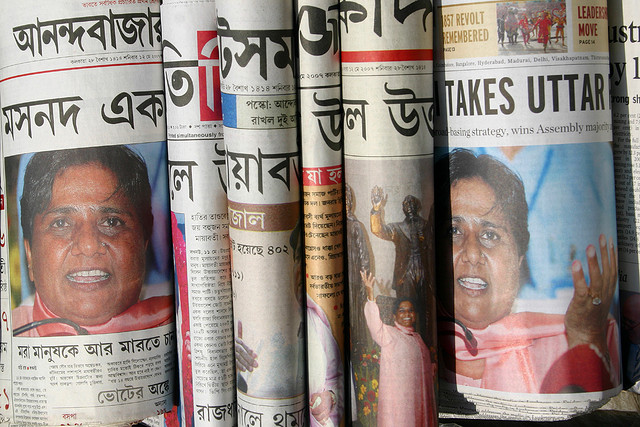The Worrying Finding About UP’s Rising Crime Numbers
India’s overall crime numbers continue to rise but do the degrees of reporting vary depending on which Government is in power at the state level ?And does it get further skewed by the comfort a community might have in the ruling Government ?
The answer seems to be yes, going by a recent report released by the Commonwealth Human Rights Initiative (CHRI), a New Delhi-based, non-government organization mandated to ensure practical realisation of human rights in Commonwealth countries.
It would appear that victims, in this case scheduled castes & scheduled tribes, are more likely to lodge complaints at their local police stations if the state Government is seen as supportive of their communities. The example of Uttar Pradesh stands out in this regard.
First, let’s look at the overall number. A total of 122,458 cases have been registered under the Scheduled Castes and Scheduled Tribes (Prevention of Atrocities) Act, 1989 (SC/ST POA Act)between 2001 and 2012 across the country.
The cases range from murder, hurt, rape, robbery to arson and dacoity. SCs and STs constitute possibly the most marginalised, underdeveloped and disempowered segments of the Indian society.
The CHRI report has included the top states, namely Uttar Pradesh, Bihar, Andhra Pradesh , Karnataka, Tamil Nadu, Odisha , Rajasthan, Gujarat and Delhi (solely added for the purpose that it is central territory), that reported the most number of crimes against SCs/STs between 2001 and 2012.
A backgrounder here: as the SC/ST POA Act has been enacted by India’s Parliament the Central Government is responsible for ensuring its effective implementation across the country.
Now, the total number of annual reported cases stood around 8,000 in 2004. After that year, the number of cases reported showed a significant downward trend till 2007 after which it has trended up, except for in 2010 when it fell from around 11,400 to around 10,400.
Uttar Pradesh (U.P.), India’s most populous state, has seen the most number of reported crimes against SCs & STs during the same time with 26,378 cases from 2001- 2012.The state started with a tally of 4,885 cases in 2001, the highest during the 12-year period, when the Bharatiya Janata Party (BJP) was in power. The numbers fell to 1,740 in 2012.
Uttar Pradesh is known for very strong caste identities. Caste identities also play a very key role in the politics of the state. Two main parties of the state represent clear vote banks: the Samajwadi party led by Mulayam Singh represents the ‘Yadav’ and Muslim vote bank while the Bahujan Samaj Party led by Mayawati represents the ‘Dalit’ vote bank.
This is what makes it interesting to look at the data on reported cases of crimes against SCs and STs in the state. The state is also set to vote in the last stage of the Lok Sabha polls on May 12th, 2014.
The chart below shows the total number of reported crimes against SC/STs and their growth rate between 2001 and 2012.
The table above shows some very interesting insights. We can see that total crimes in the state increased from 178,129 in 2001 to 198,093 during 2012. However, crimes against SCs/STs have come down compared to total crimes.Crimes against SCs/STs have come down from 4,885 to 1,740 in the same time period. We can see that during the BJP rule from 2000-02, reported cases came down from 4,885 to 2,974 but when Mayawati came to power during 2002-03, it came down further from 2,974 to 1,128.
In 2003-07, Samajwadi Party was in power with Mulayam Singh as the Chief Minister. In this period, we can see that the number of reported cases went up from 1,128 to 2,113. And when Mayawati was back in power from 2007-12, the cases dropped from 2,113 to 1,740.
This data can be interpreted in two ways:
One way is that more cases are reported when people have faith in the system. They know that the guilty will be punished and come forward to report cases. If we look at the above data from this angle, the tenure of the SP or Mulayam Singh’s Government has actually seen a rise in the number of cases reported while the BSP rule has seen a fall in the number of reported cases.
This approach is known as community policing, first implemented in the United Kingdom. In this approach, the police work with the community and often take help from the community, building trust and hence more people come forward to report crimes to the police. Currently the Kerala police has been applying this approach through their ‘Jan-maitri’ initiative.
On the other hand, fewer cases reported could mean the Government succeeded in reducing crime on the streets through effective policing and improved the justice delivery system.
This method is one of the traditional approaches,and is called single measure-based gap analysis. Under this analysis, units are ranked based on one dimension (such as arrests per dollar spent, crimes reported per police officer) of their operations.
In this scenario, the Mayawati Government has succeed in protecting SC/STs and hence they reported fewer cases while the SP Government failed to improve the law and order situation and hence there is a rise in the number of cases reported. In other words, there could be a feeling among people that if they commit crimes against SCs/STs, they will be punished by the Government (for example the Mayawati Government).
The assumption, of course, is that the absolute number of crimes that are being committed is constant. And the crimes that are being reported are either rising or falling. This is a crucial factor but past data suggests that there is a close correlation at least in proportion between crimes committed and lodged.



